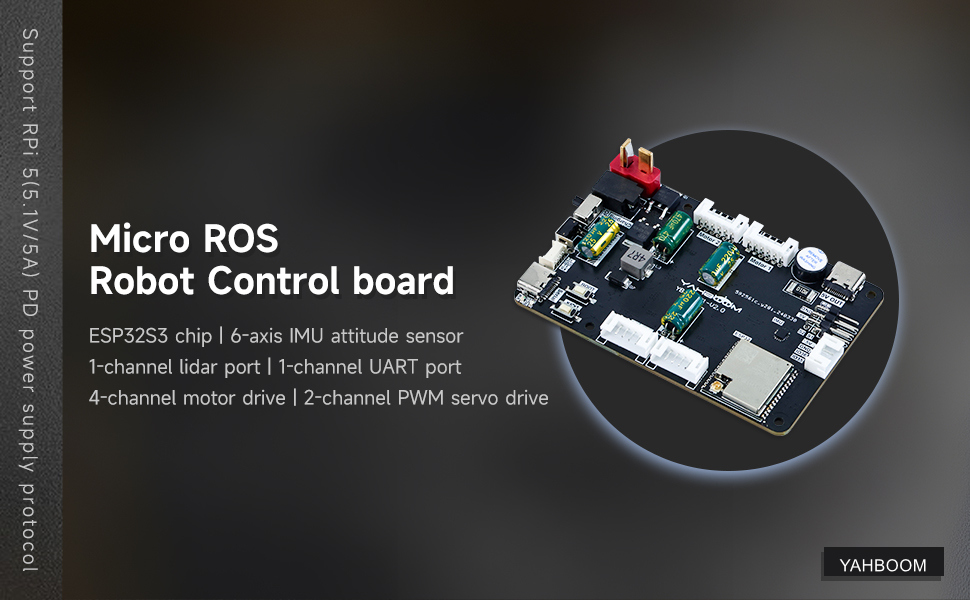0.ReadMe
1. microROS control board development environment
2. ESP32 basic course
- 1. Turn on the LED light
- 2. Button function
- 3. Drive the buzzer
- 4. Serial communication
- 5. Battery voltage detection
- 6. Drive PWM servo
- 7. Drive motor
- 8. Read motor encoder data
- 9. PID controls car speed
- 10. Read IMU data
- 11. Read radar data
- 12. Flash access data
- 13. Partition table and memory
- 14. Bluetooth communication
- 15. WiFi networking
- 16. Robot kinematics analysis
- 17.Drive ESP32 WiFi camera
3. microros basic course
5. Robot basic course
- 1. Write firmware
- 2. How to install and use VM
- 3. microROS control board configuration
- 4. Connect to microROS agent
- Robot information release
- Robot keyboard control
- Robot handle control
- Robot state estimation
- Line speed calibration
- Angular velocity calibration
- Robot URDF model
4.0 Preparation
4.1 Robot information release
4.2 Robot keyboard control
4.3 Robot handle control
4.4 Robot state estimation
4.5 Line speed calibration
4.6 Angular velocity calibration
4.7 Robot URDF model
4. ROS2 basic course
- 1. Introduction to ROS2
- 2.ROS2 install Humble
- 3.ROS2 development environment
- 4.ROS2 workspace
- 5.ROS2 function package
- 6.ROS2 node
- 7.ROS2 topic communication publisher
- 8.ROS2 topic communication subscriber
- 9.ROS2 service communication server
- 10.ROS2 service communication client
- 11.ROS2 action communication server
- 12.ROS2 action communication client
- 13.ROS2 custom interface message
- 14.ROS2 parameter service case
- 15.About ROS2 meta-function package
- 16.ROS2 distributed communication
- 17.ROS2 DDS
- 18.ROS2 time related API
- 19.ROS2 common command tools
- 20.ROS2 rviz2 use
- 21.ROS2 rqt toolbox
- 22.Python implementation of ROS2 launch
- 23.ROS2 launch xml.yaml implementation
- 24.ROS2 recording and playback tool
- 25.About ROS2URDF model
- 26.About ROS2 Gazebo
- 27.About ROS2 coordinate transformation TF2
- 28.ROS2 coordinate transformation TF2 case
Download

